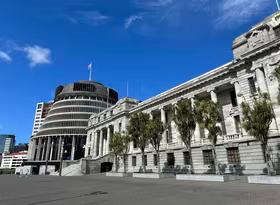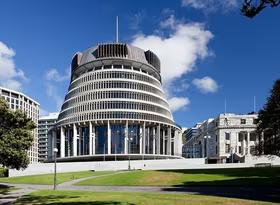
Chart of the Month: Will the fuel excise duty reduction ever end?
In March 2022, the government implemented a reduction in the tax it charges on fuel, discounting the fuel excise duty (FED) by $0.25/L. This “temporary” measure has been repeatedly extended over the last year and is currently set to finish at the end of June 2023. With an election in October 2023, and our outlook for fuel suggesting that prices will remain elevated over the next five years, we find it unlikely that the reduction will simply end mid-year.
A brief history of the FED reduction
On 14 March 2022, the government announced a package of temporary measures to provide relief for New Zealand households struggling with the cost-of-living crisis. One of these measures was a reduction in the FED of $0.25/L, with the full FED to be reinstated in mid-June 2022.
At Budget 2022 on 19 May 2022, the FED reduction was extended by an additional two months to mid-August 2022. On 17 July 2022, the FED reduction was extended further to the end of January 2023.
At the Half Year Economic and Fiscal Update on 14 December 2022, the government announced they planned to roll back the FED reduction. The full FED reduction was extended by an additional month, to the end of February 2023. The reduction would then be halved over March (i.e. the reduction would fall to $0.125/L), before the full FED would be reinstated on 1 April 2023.
Then, after a change in Prime Minister and government priorities, on 1 February 2023, the government announced an additional extension to the full $0.25/L FED reduction to the end of June 2023.
The total cost of the temporary transport subsidies, which includes a discount on road user charges and half-price public transport fares, is now expected to reach over $2.1b.
Fuel prices decline from peak, but stay elevated
At the time of the initial FED cut in mid-March, the price of regular 91-octane petrol was around $3.05/L. The main port price of regular petrol peaked in July 2022 at $3.16/L, despite a $0.25/L reduction in the FED, meaning the non-discounted price would have been $3.41/L.
The price of regular petrol has since declined to around $2.45/L at the end of January 2023.
Chart 1 shows quarterly average fuel prices, including Infometrics forecasts from the March 2023 quarter onwards.
Taking the currently announced government policy stance as a given, we anticipate the price of regular petrol will lift to $2.61/L on average over the September 2023 quarter, once the full FED is reinstated, an increase of $0.26/L from the previous quarter. Fuel prices are likely to steadily decline from the peaks in 2022 over the next few years, and we anticipate regular petrol prices will fall around 4.9% over the next two years to $2.51/L by December 2024.
Expectations of a global recession means global oil demand is expected to soften next year, driving the downward trend in forecast fuel prices. The US Energy Information Administration anticipates that oil consumption will average less than 101mb/day in 2023, with oil consumption in OECD countries declining from 2022. There are some short-term upside risks to the downwards projection, with the recovery of the aviation industry and China’s rapid re-opening placing upwards pressure on fuel prices in the next few months.
Despite an overall decline, fuel prices are expected to stay highly elevated on pre-pandemic levels, with the average petrol price in the five years leading up to the COVID-19 pandemic of $1.95/L considerably lower than the expectations for the five years post-COVID, which we anticipate will average $2.41/L.
Fuel prices have been, and will continue to be, elevated since the COVID-19 pandemic due to challenges mounting on global oil production. Russia’s invasion of Ukraine and the resulting sanctions on Russian exports, less productive and less efficient US shale wells, and falling investment in hydrocarbons more generally due to the increasing climate-consciousness of investors have all limited the global productive capacity for crude oil and sent prices to higher levels.
What does this mean for the FED reduction?
The main driver of the FED reduction was to help households struggling with a cost-of-living crisis. We don’t expect that crisis to be over by June, with elevated fuel prices, persistently high core inflation, and rising mortgage rates maintaining the squeeze on household budgets.
Recent history has made it clear the government are not against extending the FED reduction, even when they have previously stated it won’t be extended. If high fuel prices are still contributing to a cost-of-living crisis in June, will the government really unwind the FED reduction? The end of June is also the end of the fiscal year, meaning that the government has an option in Budget 2023 (on 18 May) to further extend or make permanent the reduction – at considerable cost.
Our forecasts of domestic fuel prices form part of the suite of forecasts we maintain about the New Zealand economy, and specific transport outcomes, as part of our Transport Forecasts.
















